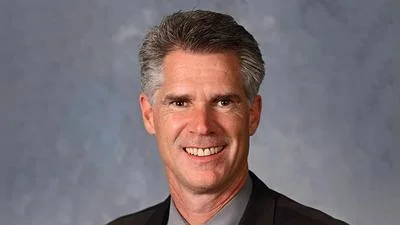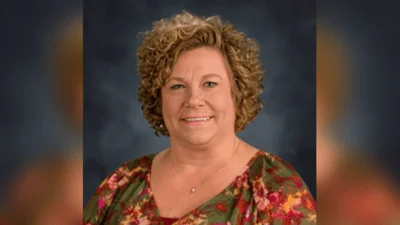An unsettling statistic you may not know is that 1 in 1,000 children with epilepsy will die of Sudden Unexpected Death in Epilepsy (SUDEP) every year. SUDEP strikes relentless fear in the families and caregivers of loved ones with epilepsy. It is the cause of death when none else can be attributed to a person with epilepsy, who was otherwise healthy, passes away. The cause of SUDEP is unknown, but what is known is that the best prevention is to control and monitor seizures in those with epilepsy.
It's not an easy subject to broach, but it has to be done—to save lives like Danny Stanton’s.
SUDEP led to Danny’s tragic passing in 2009. While his parents knew he had seizures, they had never been informed about SUDEP, and did not know there were methods to proactively monitor his health as he slept.
After his passing, his parents created the Danny Did Epilepsy Foundation with the mission to protect people with epilepsy and to prevent deaths caused by seizures. In 2021, the Danny Did Foundation reached 8 million people through awareness campaigns and provided seizure device grants to 2,000 families. In 2022, they hope to build off this success with the funds they will receive from Walgreens customers who donated in stores in October.
Mary Duffy, Executive Director of the Danny Did Foundation, has been a part of the organization since its inception. After observing advancements in tracking and monitoring epilepsy for over a decade, she shares how donations will directly assist families and caregivers through grants for new technology.
“We are so grateful for our partnership with Walgreens,” Duffy says. “The funds raised will help provide seizure detection devices for families in need. They give families a chance to intervene when a patient is having a seizure, which is especially helpful when the patient is alone or during sleep.
“Some devices are wearables, like a watch, that pick up that movement and sound an alarm or send an alert, phone call or text to the caregiver if their loved one is having a seizure,” she continues. “Other devices focus on nocturnal seizures via a mattress pad or camera placed over the bed. These systems can pick up movement and sounds an alarm to alert a parent to come into the room and intervene. Some devices also record the event, which provides valuable data for doctors. We’ve had families call us and say they had no idea their child was having seizures at night and this caught it. Doctors have changed treatment plans because of these devices.”
Other products that families request are respiratory devices that monitor breathing and can alert caregivers when there’s a disruption to a patient’s breathing at night. Because much of this technology is new, it can be costly. In all, they’ve provided over 2500 grants to families in need to secure devices in all 50 states and 15 countries.
“It’s so huge for parents to have that peace of mind,” says Duffy. “Before, maybe the answer would have been, ‘No, you can't go to the park with your friends,’ or ‘No, you can’t go away to college.’ But with this technology, caregivers can rest easier and patients can have independence.”
In addition to monitoring their loved ones’ health, families of those with epilepsy must keep on top of medication regimens that can be frequently adjusted according to changes in the patient’s condition. It can be an extra source of stress, but one that Jack Lin, Walgreens specialty pharmacist in Little Rock, Arkansas, says can be handled with the help of your pharmacist.
“Our teams offer proactive refill calls for our specialty patients,” Lin says. “We also check in with them as far as side effects from their medicines, monitor adherence to their medications and highlight or identify any barriers to a patient staying on or continuing their therapy.”
Lin sees many epilepsy patients, who, along with their caregivers, can benefit not only from a personal relationship with their pharmacist, but through the suite of digital tools offered through the Walgreens app. Lin touts the Find Care feature for seeking out neurologists or even mental health experts who can assist with physical and mental questions. The app itself can be a gamechanger for epilepsy patients. As Duffy points out, memory loss can be a side effect of some epilepsy medications. Through features like setting pill reminders, refilling by scanning the bottle, chatting with a pharmacist and ordering Same Day Delivery, patients can eliminate the stress that comes with managing their condition.
When it comes to the chance to donate to nonprofit organizations like Danny Did in stores, Lin says it’s integral to helping pharmacists care for the whole patient.
“The goal and the mission of these organizations helps me as a pharmacist to carry the baton so there are no breakdowns in a patient’s therapy,” says Lin. “I lean on them to be connectors for things that are not necessarily healthcare related—like raising awareness—but are still intertwined with patient care. When I hear of pressures and struggles that I can’t necessarily help with, I can then point caregivers or patients to these organizations that they might not have known about.”
In addition to funds, Duffy agrees that awareness through in-store fundraising has been an unexpected, but major win in partnering with Walgreens. Three areas, or about 140 stores, offered scannable donations to the Danny Did Foundation from Oct. 13 to 27, 2022.
“We’ve started to get calls and emails from people who tell us they were in Walgreens and their children or they themselves have epilepsy and they learned about Danny Did. So then we can tell them about our resources. It’s going beyond what we could ever do without Walgreens’ help in terms of reaching new families and making everyone aware of SUDEP.”
In total, Walgreens customers donated more than $17,500 for the Danny Did Foundation in one week—an amount that will lead to an incalculable amount of peace of mind for those with epilepsy and their loved ones.
Original source can be found here.




 Alerts Sign-up
Alerts Sign-up